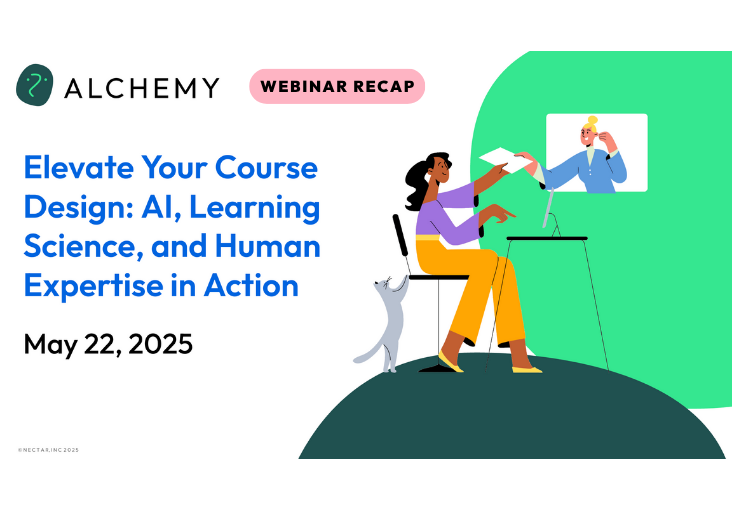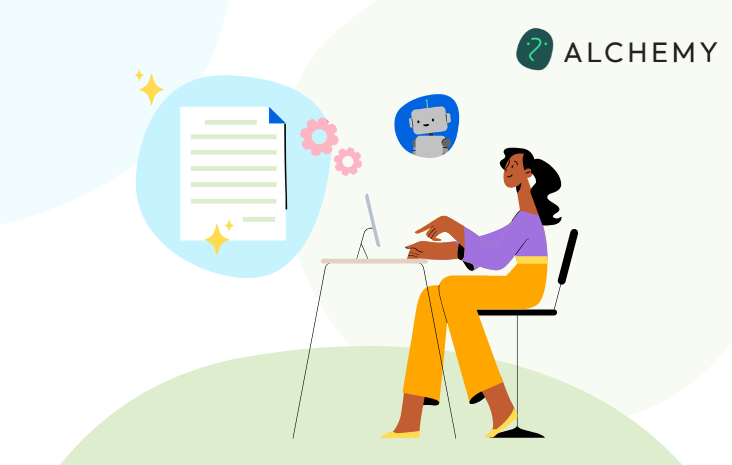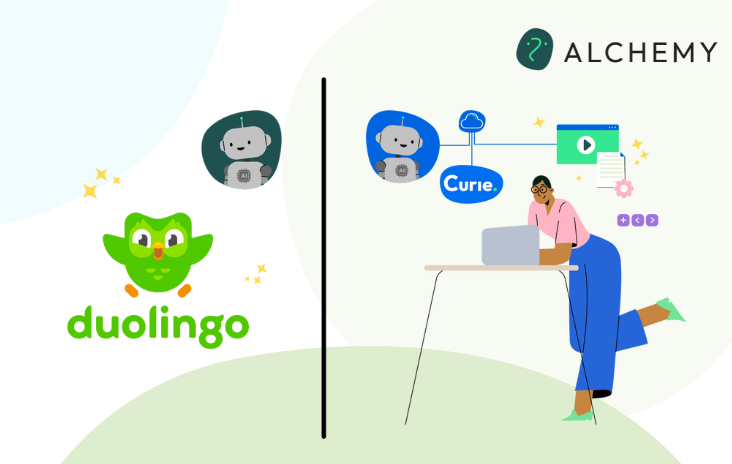Recap
The Emergence of Alternative Pathways for the Modern Learner

Last week we kicked off our new leadership series with a timely and thought-provoking conversation: The Emergence of Alternative Pathways for the Modern Learner.
As learner demographics shift and workforce needs evolve, higher education institutions are reimagining the traditional degree path. Alternative academic pathways—such as stackable credentials, accelerated programs, and career-connected learning—are becoming essential strategies to increase access, improve retention, and support student success.
This first session featured a panel of higher ed leaders exploring how colleges and universities are creating more flexible, relevant, and inclusive learning models to meet the needs of today’s students. Alchemy’s Carrie O’Donnell facilitated the conversation with panelists Douglas Harrion, PH.D. (Associate Dean, Division of Applied Undergraduate Studies, NYU School of Professional Studies) and Jared Auclair, Ph.D. (Dean, Northeastern University College of Professional Studies). Together, they shared institutional insights, national trends, and personal experiences that are shaping the future of higher education.
Key Takeaways
1. Alternative pathways are critical for student success
Today’s learners are often working adults, first-generation students, and individuals seeking upskilling opportunities. Flexible, nontraditional programs—like Northeastern’s “PlusOne,” which combines undergraduate and graduate degrees—are essential to meeting these learners’ needs.
2. Professional studies divisions are driving innovation
Schools of professional studies are uniquely positioned to lead academic innovation. Their proximity to industry needs and ability to quickly iterate makes them ideal spaces to pilot new models, design workforce-aligned credentials, and expand access.
3. Flexibility is the foundation of modern program design
Whether through hybrid modalities, interdisciplinary offerings, or applied learning, flexible program structures empower students to balance education with life and work responsibilities—without sacrificing quality or impact.
4. Education must align with regional and global workforce needs
Higher education plays a vital role in economic development. Auclair shared how regional workforce initiatives have shaped his thinking on designing programs that build real-world skills and strengthen community ecosystems.
5. Leaders’ personal journeys inform institutional transformation
Harrison’s path—from first-generation college student to academic leader—underscores the value of inclusive pathways. Many of the most innovative voices in higher ed today are leading from experience, having navigated nontraditional routes themselves.
Conclusion: A New Era of Higher Ed Pathways
The traditional degree model no longer meets the needs of today’s students or tomorrow’s workforce. Colleges and universities must build alternative pathways that offer momentum, meaning, and measurable outcomes. By doing so, they can create scalable, equitable experiences that redefine student success.
If you missed the live discussion, you can watch the full recording on our YouTube to gain deeper insights and actionable strategies. Stay tuned for more from our series, “Evolving Higher Ed for the Modern Learner.”
Watch Now

